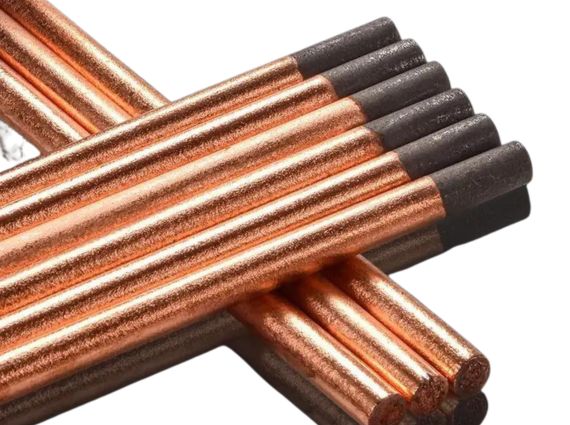What is the matching relationship between carbon rod diameter and current intensity? How to avoid overload burning?
The matching relationship between carbon rod diameter and current intensity usually follows certain empirical rules. At the same time, there are corresponding measures to avoid overload and burning. The following is a specific introduction:
The matching relationship between carbon rod diameter and current intensity
Generally speaking, the current intensity that a carbon rod can carry is related to its cross-sectional area. The larger the cross-sectional area, the greater the current it can carry. The cross-sectional area of a carbon rod is proportional to the square of the diameter. In practical applications, the current intensity matched by carbon rods of different diameters is roughly as follows:
A carbon rod with a diameter of 6mm can generally withstand a current intensity of about 100-150A.
A carbon rod with a diameter of 8mm can withstand a current intensity of about 150-200A.
A carbon rod with a diameter of 10mm can match a current intensity in the range of 200-300A.
A carbon rod with a diameter of 12mm can usually carry a current of 300-400A.
However, these data are only approximate ranges. In actual applications, they will also be affected by many factors such as the material, length, use environment and heat dissipation conditions of the carbon rod.
Methods to avoid overload burning
Reasonable selection of carbon rod specifications: According to the actual current intensity required, refer to the matching relationship between the carbon rod diameter and the current intensity, and select a carbon rod of appropriate diameter. If the current requirement is high, a carbon rod with a larger diameter should be selected to ensure that it can withstand the corresponding current and avoid overload.
Control the working current: Use instruments such as ammeters to monitor the current in the circuit in real time to ensure that the actual working current is within the range that the carbon rod can withstand. At the same time, to avoid damage to the carbon rod caused by excessive instantaneous current when the equipment starts, soft start and other methods can be used to limit the starting current.
Improve heat dissipation conditions: Good heat dissipation can effectively reduce the working temperature of the carbon rod and reduce the risk of burning caused by overheating. The heat dissipation effect can be improved by adding cooling fans and optimizing the ventilation design of the equipment. For example, in some equipment using carbon rods, heat sinks or ventilation ducts are set around the carbon rods to accelerate air circulation and take away heat.
Regular inspection and maintenance: Regularly check the use of carbon rods to see if there is wear, cracks, etc. If the surface of the carbon rod is damaged, it should be replaced in time to avoid affecting its performance and causing overload and burning. At the same time, check whether the circuit connection is good to avoid extra resistance and heat caused by poor contact, which will endanger the safety of the carbon rod.

Contact: admin
Phone: +86-13665233012
E-mail: service@weldmaterial.com
Add: Huanghua Industrial park, Jiangdu City, Yangzhou , Jiangsu Provicne, China.